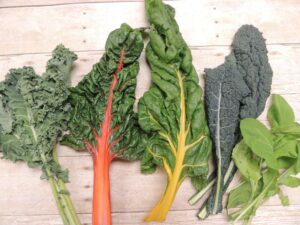Vegetables Have Sugar? Where Are They?
Last month, there was a post I shared with you about hidden sugars (click here for that post), and I know, based on the feedback, many people were shocked at where sugars are hiding! That piece focused a lot on the glycemic load – and more specifically to fruits. So I wanted to make sure I provided you with the same information pertaining to vegetables – some ones to consume in moderation, and those that get that ‘green’ light (pun intended?). Which leads me to this – Do vegetables have sugar?
YES.
First things first, it’s no surprise that vegetables are great for you. From mineral content to fibre, antioxidants to vitamins, and lover calorie choices. Now, having said that, you might be surprised to know that those hidden sugars I mentioned earlier – yup! Vegetables have sugar hiding too!
I want to remind you of the list I shared in that previous post to help get us started;
- Beets (8%)
- Sweet Corn (7.7%)
- Sweet Potato (6.5%)
- Peas (5.9%)
- Sweet Onions (5%)
Top Five Vegetables with the Lowest Sugar Content
- Broccoli
- Mushrooms
- Eggplant
- Green Beans
- Rapini
Surprised by any of these?
How do we know…
… which veggies are lower in natural sugars and carbohydrates than others, without constantly checking a list?
Here’s a quick tip for you (and a saying I like to refer to)
If it’s grown underground than it’s naturally higher in sugars and carbohydrates
You might be thinking to yourself, ‘Kiran, since you’re telling me vegetables have sugar, why are underground veggies higher in sugars than those above ground?’ And my response would be for the simple reason that root veggies are the store house of energy for the plant that grows above ground, so naturally they are sweeter.
Above the ground, non-starchy vegetables are generally better for you, leafy and green is number one every time. Some great options in that department as well are veggies like spinach, asparagus and zucchini. Let’s visit the starchy ones for a moment and their effects on a low carb diet (if that’s the goal).

Let’s Get Technical for a Few | Vegetables Have Sugar
I came across a great article on a site that I thought had a great way of describing the following;
‘Phytochemicals are compounds that have been found to protect the body from chronic disease patterns. These conditions are becoming more common, such as diabetes, heart disease, cancers, and neurodegeneration like dementia, Parkinson’s disease, and Alzheimer’s disease.
Research is finding that a diet rich in phytochemicals protects the body from physical and environmental stressors that lead to chronic disease. Some of these phytochemicals are called polyphenols and phenolic acids and are abundant in fruits and vegetables.’
Quercitin for example can be found in green tea, red onion, broccoli, and green leafy vegetables. It has anti-inflammatory properties, is an antioxidant, and also has been found to reduce blood pressure and lower cholesterol.
Anthocyanin as another example can be found in blueberries, cranberries, raspberries, bing cherries, black current, and acai. This has been found to be a potent antioxidant – the sun is one source of free radical damage, and anthocyanins can help mitigate the effects of oxidative stress.
Overall, I hope you found this information helpful and would love to know of anything that may have surprised you! Do you have a favourite vegetable? Did it fall on either list above?
Thank you so much for reading! I hope you have found some valuable information, if so, I’d love to hear about it! Please feel free to share this post with anyone who might benefit, and comments are always welcomed and appreciated.
I look forward to connecting with you next time!
And be sure to check out why you should order your family’s next meal courtesy of Ki’s Kitchen
From my kitchen to yours,
Peace+Love
Kiran Bissoon
– See more at: https://kiskitchen.com/2017/01/22/hidden-sugars-least-expect/#sthash.k3plCqdu.dpuf
